Mightmitenot
Driftwood on a shore
- Joined
- Feb 25, 2014
- Messages
- 829
- Reaction score
- 1
- Points
- 11
Self powered camera developed at Columbia. In well lit areas it can take a picture per second as long as the light remains.
Do you have a link so we can check it out? Sounds cool
Good News! The DOJ Might Kill the Comcast-Time Warner Merger
http://www.bloomberg.com/news/artic...ers-said-to-be-leaning-against-comcast-merger
Fan-f***ing-tastic
It's about time the DOJ decided to tell them to knock it off (or even consider it) since the bigger these ****ers get the harder it is to tell them anything without them basically saying "**** you we have lawyers, money and your phone and internet. Do what we want." Because they basically do that now.
Look at the BS they get to with regular people. They'll charge you for months or years for hundreds of dollars and refuse to give a refund for any of it or try and give back a small percentage of money they took and offer 'free' services instead for a limited time. I worked for Bell Canada , these jackasses getting more power in a massive monopoly is very bad.
It's a nice jump forward but still far too expensive for my tastes right now.Blazing Fast SSD Flash Drives Finally Available in Half TB Capacities
http://www.slashgear.com/owc-envoy-pro-mini-ssd-usb-released-120gb-to-480gb-16379245/
I want at least 4 of these right now please

Ars TechnicaGoogle's DoubleClick advertising network is the lifeblood of many websites driven by ad revenue—and it's also a potential path of attack for criminals trying to spread extortionware and other malware. Some Huffington Post readers fell victim to malicious advertisements spread through Google's DoubleClick network early this week, but another simultaneous attack may have reached an even bigger audience.
Two ad network merchants became an unwitting accomplice to attackers with similar Flash-based ads, displaying them on multiple legitimate sites. The Huffington Post advertisement—a fraudulent Hugo Boss ad which also appeared on other major legitimate sites (including the real estate site Zillow.com)—was spread through DoubleClick via the ad network AdButler, according to Malwarebytes, which tracked the attack. That attack attempted to download Cryptowall ransomware to victims' PCs.
The second attack came to DoubleClick through Merchanta, an ad network that serves up 28 billion advertisement impressions a month in the US alone. There is no estimate of how many people were exposed to the attack, but it likely cast a worldwide net and could have infected thousands of PCs with malware. Malwarebytes did not collect the malware payload of the Merchanta attack, but Malwarebytes Lab's Jérôme Segura wrote in a post on the attack that the Flash exploit used in both attacks was identical, using the same Flash exploit kit. "It is worth noting that this malicious SWF (Flash file) had zero detection on VirusTotal when it was first submitted," Segura said.
Both attacks were spread to DoubleClick through real-time bidding through multiple ad networks. The Merchanta ad was placed through an account for Bidable.com, a real-time bidding company, belonging to a fraudulent customer posing as a legitimate advertiser. (The ad in question appeared to be for Hermés Paris.)
In this sort of malvertising fraud, the attackers usually send a non-malicious version of the advertisement to the network for approval and then send a replacement "minor modification" of the ad at the last minute, hoping to get past quality checks by the network provider. When successful, the malicious ad gets pushed out with full approval to other ad networks through bidding for available ad frames.
As a result, hundreds of legitimate websites end up displaying ads that could infect visitors with Cryptowall or other malware without detection. While other malvertising attacks have used malicious hidden IFRAME elements to invisibly redirect users to an exploit site, these two attacks used the recent Flash vulnerability alone to perform the download.

The last time we checked in with MITs Self-Assembly Lab, it was showing off video proof of a chair that assembles itself in water. Now, the team has uploaded video of its latest project: A flatpack table that does the assembly itself.
The lab calls it programmable furniture, and while that implies that this table has a machine-based brain behind it, thats not exactly true. The prototype, which is being shown at the Salone del Mobile in Milan right now, was actually designed to take advantage of a special tensile fabric thats strung between its wooden frame.
The frame itself was a collaboration with Wood-Skin, a company thats developed an unusual wood laminate that can be flexed and transformed thanks to the careful milling of its surface into triangular pieceseg, tessellationthat makes it flexible. Heres what Wood-Skins products look like up close:

The flexible wood frame makes it possible for the table to lie flat, the way it would be shipped or stored, and then smoothly transition into a 3D object. The tensile fabric between the legs pulls the pieces into place:
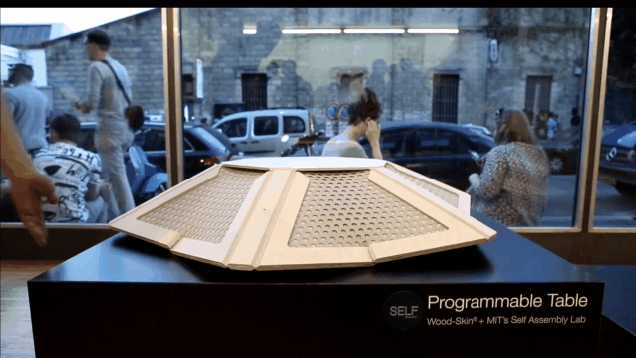
Obviously, its a proof of concept for a much larger ideathat material science has huge potential when it comes to what we buy. So much of what we own arrives packed inside a container, designed to be perfectly optimized for efficient shipping. Just look at the aluminum can. Materials that are intelligent enough to actually interact with their environments, adapting to conditions around them? That could be bigand not just for Ikea.

The jurys still out on whether or not youre actually killing individual brain cells with every sip of booze, but over-indulgence can certainly have a harmful effect on your ability to think straight. So maybe if you manage to make drinking educational, like with a $20 set of ten glass coasters featuring slices of a human brain, you can cancel out the negative effects of booze? Seems like pretty sound logic to us.
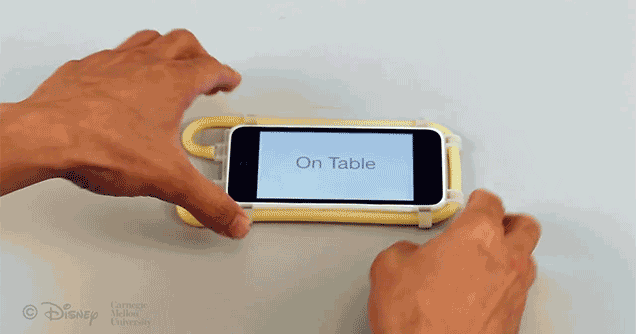
In an effort to bring more functionality and interactivity to a device that is often just a large monolothic touchscreen, researchers at Carnegie Mellon University and Disney Research have come up with a series of accessories that manipulate sound coming from a smartphones speaker to serve as an external controller.
Called Acoustruments, the cheap plastic accessories direct an ultrasonic sound from a smartphones speaker back to its own microphone. But in-between the speaker and mic are obstacles that change or vary the pitch and intensity of the soundsimilar to how moving the slide on a slide whistle can change the sound it produces.
[YT]llOKDcr1gsY[/YT]
An accompanying app knows exactly what sound is being produced, and by comparing that to what the microphone ends up hearing, the Acoustrement can determine how a user is interacting with the device. The accessory could be as simple as a button that serves as a snooze button, or a wheel that changes settings like a dial, or a full-on smartphone case that knows when the device is sitting on a table, being held, or even squeezed like a camera.
And because it doesnt actually draw any power from the device (besides the constant ultrasonic tone being produced) this added functionality doesnt hinder a smartphones already limited battery life. So eventually it could be implemented directly into a devices housing, adding more buttons or ways to interact with a smartphone, without any negative consequences.

The future is on display today in Japan, where retail workers will work alongside a talking humanoid robot to welcome customers at a major department store.
The androids name is Aiko Chihira, and her job as receptionist is to greet shoppers as they enter the store, give them directions, and make conversation with pre-programmed scripts. Chihira can blink, blow, move her lips when she talks, and make other lifelike (albeit pretty stiff and choppy) expressions and movements powered by 43 motors.
The machine is made by Toshiba in collaboration with Osaka University Intelligent Robotics Laboratory. And while its not the only retail robotNestle hired a robot named Pepper to sell coffee makers at stores in Japanits certainly the most realistic. At least, for now: Japans much-hyped hotel staffed almost entirely by humanoids is set to open July 17.
Chihiras real value, however, isnt really as a skilled receptionist; its as a publicity attraction: Come for the humanlike talking robot, stay for the spring styles.
We hope the robot will spark conversation between people, says store marketing manager Gakudai Nanba. Im hoping this will become something that would spark a giggle or two.
Check it out:
[YT]fH9IlZpwOPA[/YT]

Google is making a rare change to its search algorithm tomorrowone that has the power to dramatically alter a sites ranking in Googles all-important search results. SOUND THE ALARM.
The change is really pretty simple. Its designed to make Googles search results more useful for people using it on their phones. Starting tomorrow, the algorithm will reward sites with mobile-friendly designs and push down those which arent optimized for mobile viewing. What, exactly, does a non-optimized site look like? Well, think back to the last time you tried to view a site on your phone and found yourself zooming in and out, trying to find the right button, or failing to view the entire page. In short, its annoying, and its something Google is now doing its best to stamp out.
Its a shift that has been in the offing for months since Google announced it back in February, saying it would have a significant impact in our search results. But as the date for implementation has approached, discussion of the change has reached fever peakit even has its own panic-inducing nick name, Mobilegeddon, which seems a tad over the top.
But to test whether a particular site will be affected by the change, Google built a site that lets you plug in a URL and see whether the algorithm will punish it for its design. Gizmodo.com is in the clear, as are many other news sites. But the Economist points to an analysis by the research firm Portent, which analyzed 25,000 top ranked sites and found that 10,000 failed the testincluding the Department of Homeland Security. Sadly, TedCruz.org is fine, as are the sites of other 2016 candidates I tested.
So, what does this mean for you? If youre using Google on your phone, its going to get better. If youre a webmaster or involved in running a site and youre not sure if it passes Googles muster, you can use Googles own test site to find out whether youre in the clear.

When Microsoft bought Nokias mobile division in 2013, it made a deal that the Finnish manufacturer couldnt make any smartphones until after December 31, 2015. Now with that date approaching, Nokia is ready to get back in the game.
Citing two sources whove been briefed on Nokias smartphone plans, Re/code reports that Nokia will be returning to the smartphone market, and has other ambitious plans for virtual reality as well.
Although Nokia cant make physical handsets until the end of this year, the company has done everything in mobile except make a smartphone. Last summer, Nokia made a pretty awesome Android Z Launcher, and it showed off its iPad-inspired tablet at Mobile World Congress this past March. Just last week, Nokia made a big move and purchased French telecommunications equipment maker Alcatel-Lucent for $16.6 billion. So yeah, even though Nokia may be down, its definitely not out of this mobile fight.
However, its probably best to temper that enthusiasm for Nokia of old. As Re/code mentions, the company wont be building some huge manufacturing operation in step with Apple or Samsung. Instead, Nokia will likely continue selling its brand and designs for other companies to build and distribute, much like Nokia did with Foxconn and the new N1 Android tablet.
Will we see any Nokia-branded anything in the US? Who knows; so far the N1 tablet has no plans to come to the States, and Nokias smartphones may follow suit. But its strangely comforting knowing the company whose hardware I played hours and hours and hours of Snake on as a kid isnt completely dead just yet.

3D printing has just reached another major milestone as the U.S. Federal Aviation Administration has officially approved GEs T25 as the first 3D printed part cleared for use on a commercial jet engine.
GE is now working with Boeing to retrofit over 400 of its GE90-94B enginesused on the modern 777with the new part.
But before you get second thoughts about ever flying again, its important to note that this part wasnt created using the consumer-grade 3D printers that churn out toys, smartphone cases, and other plastic trinkets. The fist-sized silver metal housing designed to protect a compressor inlet temperature sensor from icing was created using a 3D printer using additive manufacturing techniques. But instead of extruding plastic from a heated nozzle, a highly-accurate laser is directed at layer after layer of cobalt-chrome powder to slowly build up the part over time.
What youre left with is a part made from lightweight cobalt-chrome alloy metal thats just as strong and durable as parts made with more traditional manufacturing techniques like metal stamping or milling. Except that using a 3D printer means these parts are actually faster to produce and refine, they can be far more complex in their design, and they result in little to no wasted material during production.

The actual car hasnt been revealed to the public just yetat least without its camo wrappingbut that hasnt stopped BMW from announcing that its new 7 Series will be the first car that can be parked remotely using its key fob, without anyone actually having to be inside the vehicle.
Other car makers have talked about and demonstrated similar passengerless self-parking technologies designed to let a vehicle squeeze into a space too small for its doors to be opened. But BMW is the first to include it on a production vehicle, allowing the driver to use the cars touchscreen Display Key fob to either have it pull into a tight spot, or out of one.
[YT]mFlMcOfO68M[/YT]
At CES 2014, Bosch, a maker of automotive components, was showing off a similar feature the company had developed that allowed drivers to autonomously park a vehicle using a smartphone, but theres no word if BMW is using the same technology for its new 7 Series. And while the new feature isnt quite the completely autonomous self-driving car weve all been anticipating, its still a great sneak peek at the technology, especially for those of us who dont exactly excel at parking.
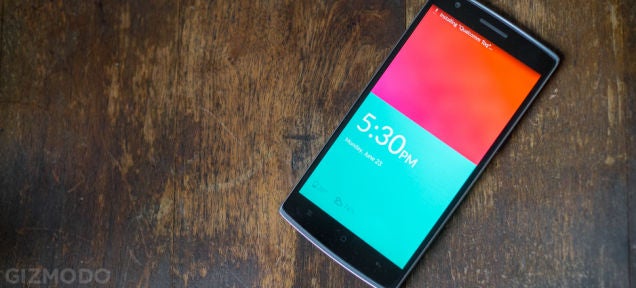
When the OnePlus One came out last year, it was a killer deal: a $300 off-contract smartphone so beautiful, it made Google look like poop for charging so much for the Nexus. The only problem was that, aside from special promotions, you needed to be invited to buy it. But that exclusivity is now over: Starting today, anyone can buy a OnePlus One, invites be damned.
Or sort-of damned OnePlus announced that itll keep the invite system when it launches the upcoming OnePlus 2.
OnePlus announced the One a year ago today. Of course, a year in the smartphone aging cycle is like a decade, so its not the shiny new toy it once was but its still a good buy if you want to go off-contract.

Nobody really likes getting blood drawn. Best case, its painless and youre out of the doctors office quickly. But then there are those instances where you end up killing an afternoon at the clinic, only to have an intern stab your arm in five different places before hitting a vein.
A new DARPA-sponsored company would like replace needles and make blood testing way more convenient in one fell swoop. Tasso Inc., an affiliate of the University of Wisconsin-Madison, has just received a $3 million federal grant to continue developing a pingpong ball-sized disposable device that allows users to painlessly administer their own blood tests in just two minutes.

Rather than puncturing a vein, when the user holds this device against his or her skin, it creates a slight vacuum that immediately starts to pull blood from many microscopic open channels called capillaries. During the process, capillary actionthe same physics that causes water to wick up paperbeckons blood into an attached collection container. The device can currently extract about 0.15 cubic centimeters of blood, enough for most routine lab analyses, including cholesterol, infection, cancer cells and blood sugar tests.
The DARPA grant will fund research aimed at designing preservatives that can stabilize a blood sample for up to 1 week at 140 degrees Fahrenheit, enabling users to send blood in for analysis without the hassle of rush-delivering it on ice.
We see our specialty as people who need to test semi-frequently, or infrequently, to monitor cancer or chronic infectious diseases, Ben Casavant, vice president and co-founder of Tasso Inc., said in a press release. Instead of buying a machine or expensive equipment, we ship you this device, you put it on your arm for two minutes and send it back to the lab.
It sounds like a pretty swell idea. If all goes well, the product could be hitting the market as early as 2016, meaning that for many, tedious and uncomfortable lab trips could be drawing to an end very soon.

The worlds first battery-powered rocket not only sounds like something straight out of science fiction, it could very well upend the space industry by ushering in a new era of frequent and (relatively) low-cost rocket launches.
The carbon composite Electron, unveiled last week by the Auckland-based company Rocket Lab, claims to be a radical departure from its modern-day competitors. Rather than using expensive and complex gas generators, it employs electric motors and lithium polymer batteries to drive its turbo pumps. Its also the first hydrocarbon engine to use 3D printing for all of its critical components. And rather than focusing on big, infrequent payloads, Electron is aiming small.
That is, Electron is designed carry mini satellitesup to 100 kilogramsto a 500 km orbit above the Earth. While that may not sound super impressive, given that the average Earth-orbiting satellite today weighs upwards of 2,000 kg, theres a kicker. As Rocket Labs chief executive Peter Beck told Quartz, Electron can shoot small payloads into orbit for less than $5 million dollars. Thats a fraction of what it costs to launch bigger and more powerful rockets today. (For comparison, the Space X Falcon 9, which launched 6 times last year, cost about $60 million per launch.) With 30 launch commitments already lined up, Rocket Lab is hoping to begin shooting its Electron skyward every month in 2016.
What this could potentially do is usher in a new wave of space traffic, with universities, private companies and other small enterprises using Electron to hitch a cheaper and faster ride into space to deliver a small payload. This means we might soon bear witness to a torrent of small, lightweight space satellites, which could be used for everything from climate monitoring to creating a global Internet. (Which sounds, uh, awesome. But also: Lots more space junk.)
Still, Electrons first test launch is slated for the fall, so weve still got a bit of a wait before we know for sure whether this potentially game-changing rocket can deliver all that it promises.

It looks like a work of art, but the image shown above is the 3D structure of an actual forest, reconstructed from sophisticated laser scans that scientists now hope can be used to quickly check a forests vital signs. Kinda like a tricorder IRL.
A research team based in Hungary and Vienna is fine-tuning an aerial laser scanning technique known as LIDAR to monitor the health and biodiversity of protected natural areas across Europe. The principle here is quite simple. During an aerial fly-over, a short pulse of infrared radiation is sent from a laser system to the ground. An echo of that pulse is scattered back and captured by a sensor, which uses the degree of scatter to reconstruct the shape of the landscape below.
Unlike aerial photography, laser scanning can be used to model the entire structure of a forest down to the ground. The researchers are now feeding this data into software they wrote in Python, which uses complex algorithms and machine learning to identify different assemblages of plants that typically occur together, including trees, shrubs, herbs and grasses. Unwelcome disruptions, such as weeds and vehicle track marksmaybe even your littercan also be detected.

A false cover aerial image of a protected wetland ecosystem in Hungary, with colors representing different vegetation assemblages. Credit: Zlinsky et al. 2015
A healthy woodland will harbor a diverse mix of woody and herbaceous plants, but prior to this technology, forest check-ups could only be conducted through slow and laborious field expeditions. In a proof-of-concept demonstration, the research team showed that they were able to achieve up to 90% agreement between remotely collected data and on-site observations for a protected mosaic of marshes and meadows in Hungary.
Hopefully, the new tool will aid in ecosystem monitoring and conservation, allowing researchers to keep a keen eye on vast swaths of protected land, and to catch early warning signals when something looks amiss. Thats good news, because were already seeing all sorts of shifts in the composition and productivity of natural ecosystems thanks to climate change. When it comes to adapting our management strategies, the guys protecting our forests need all the help they can get.

With spring coming late on the heels of a brutal winter, its hard to believe that summer is right around the corner. Still, in a few short months itll be plenty warm enough to take your self-inflating, self-propelled paddleboard out for a spin on the water. Uh, say again?
This high tech board, whose Kickstarter campaign runs until mid-May, is the brainchild of Slovenia-based startup SipaBoards. Claiming to be the worlds very first self-inflating stand-up paddleboard (who knew?), the device includes a fully-integrated electric motor that gives the paddler up to three knots of boost. The paddle itself is a giant remote control which allows you to wirelessly switch the motor on and off. If you and your paddle fall in the water, the board immediately powers off rather than leaving you stranded forever. It actually sounds pretty clever, and it aint bad looking, either.
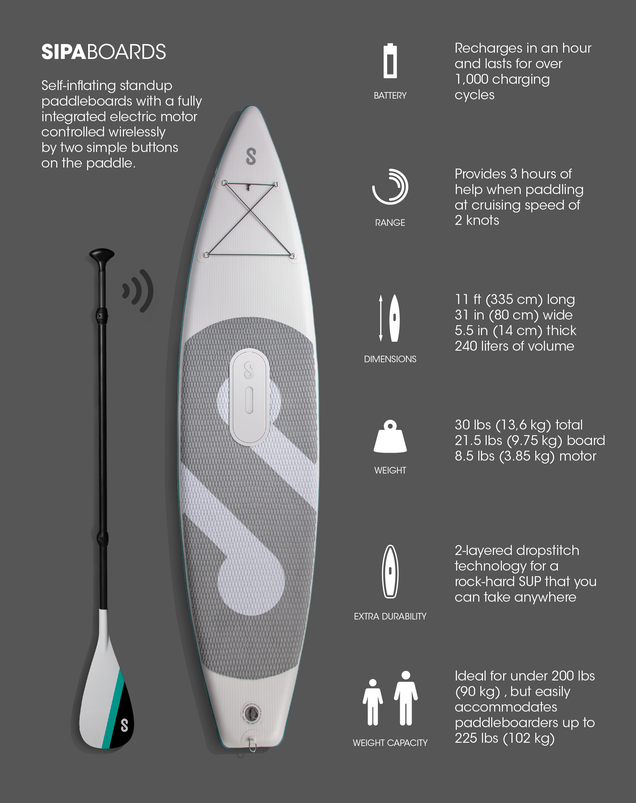
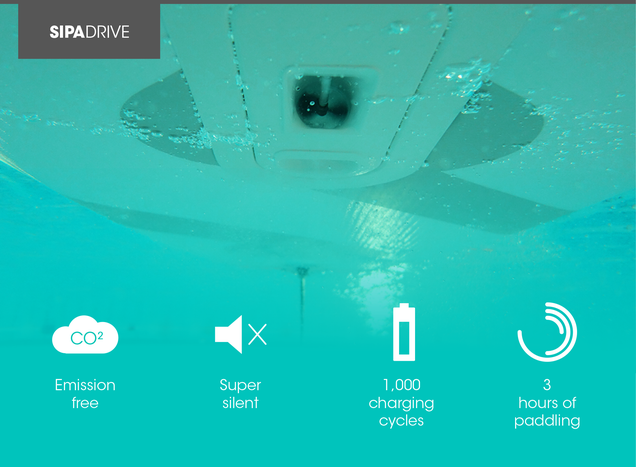
SipaBoards hopes their new device will open paddleboarding up to wary novices, by making it easier for anyone to paddle further and stay on the water longer. If youve always been curious about the sport, but develop a nervous twitch when youre separated from technology for more than five minutes, this might just be the perfect opportunity to ease yourself back to nature.
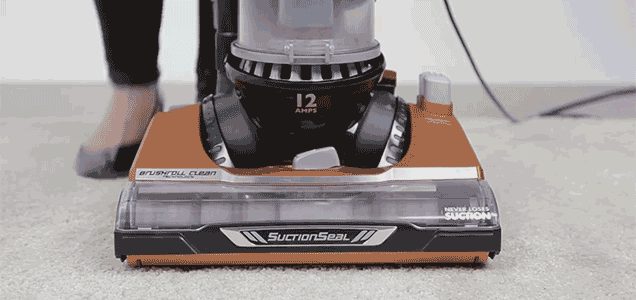
Better suction, battery power, and HEPA filters are all great features to look for in a vacuum. But who cares about any of those now that Eureka has created an upright vacuum that can automatically clean hairs and threads tangled around its spinning brush roll? Never having to reach in there with scissors is a fantastic innovation.
As anyone who hasnt cleaned their vacuum in months knows, all that crap that gets tangled around the brushroll can hinder its ability to properly agitate carpets to release dirt, or direct debris up inside it. Simply ignoring it is the lesser of two evils compared to cleaning a brushroll by hand, but the new Eureka Brushroll Clean promises to do that nasty work for you.
[YT]OqUwPyEFrZ0[/YT]
Details on how the self-cleaning mechanism actually works are a little vague, but from the looks of it stepping on a lever at the base of the vacuum engages a cutting or scraping tool that helps to dislodge and suck up hair and other dirt wrapped around the brushroll as it spins. And to ensure its completely clean, theres a see-through window on top of the vacuums brushroll so you can inspect it without having to turn the unit upside-down.
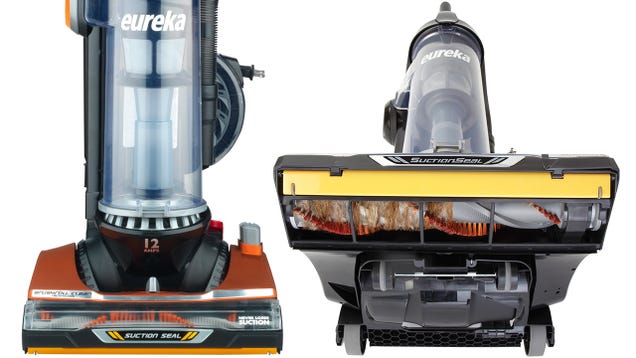
For $200 the Brushroll Clean vacuum also includes a self-retracting 27-foot cord, and a design that minimizes the twists and bends the moving air has to navigate which serves to maximize the amount of suction generated by the units 12-amp motor. But lets not forget whats important here. That self-cleaning brushroll could be the greatest innovation in cleaning since the housekeeper was invented.
The days of standalone car GPS units have been numbered ever since Google Maps started turn-by-turn directions, but Garmin is still keeping them relevant by packing in smarts. The latest nuviCam LMTHD not only features a dashcam, but it can use that same lens to prevent you from crashing.
Integrating a dashcam into a standalone GPS unit is a move that makes a lot of sense which is why Garmin isnt the first, that crown going to Magellan. The smart (ba-dum) thing is using that same camera to watch the road, and provide real-time alerts to the driver if he strays from his lane, or gets too close to the car in front.
Lane departure and crash alerts are obviously not themselves new features Mitsubishi was offering the feature way back in 1992. But normally, it involves speccing out some hideously expensive technology package, normally tied in with some hideous Bluetooth radio. With Garmins offering, although accuracy is maybe not guaranteed, you can add it onto anything with a windscreen.
You can pre-order the nuviCam LMTHD for $400, with delivery slated for June.
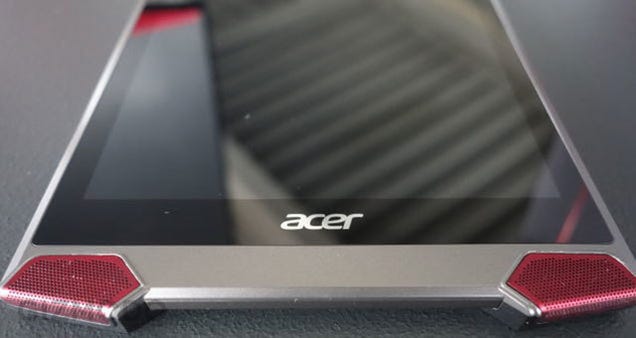
Acer just released a kraken. Forty different gadgetslaptops, desktops, tablets, wearables, fitness trackers, mini PCs, monitorsfor the upcoming back to school season. But the most intriguing was Acers mysterious new gaming tablet. The Predator.
Although Acer outed its new Android gaming tablet today, it really didnt have much to say about it. We cant tell how much power it actually packs, which is a shame. We were able to confirm that the tablet will come with four separate, front-firing speakers on the front for immersive surround sound and also haptic feedback for gaming. The 8-inch model is obviously aimed at NVIDIAs Shield gaming tablet, which was a great little portable gaming machine with unfortunately ****** battery life.
Even though the specs are still MIA, the Predator tablets look neat. Very sci-fi. Quite a departure from Acers typically bland Iconia tablet line.
The tablet is part of a new line of Predator products that includes two monstrous 15-inch and 17-inch gaming laptops and a curved 35-inch 21:9 gaming monitor. The tablet wont be available until sometime in Q3. Here are just a few pics of the tablet, 15-inch laptop, and desktop PC so you can see the new design language.
In addition to crazy gaming machines, Acer is updating loads of laptops, and adding a few super cheap Switch and Aspire R11 series laptop/tablet hybrids that start at just $250. (Yep, cheap laptops are looking pretty good this year.) Also, Acers excellent big screen 15-inch Chromebook now comes with a nifty, high-end Intel Core i5 option. Oh, and Acers flagship smartphone, the Liquid X2, is coming to the United States. Its got three sim slots.
So. Many. Gadgets.
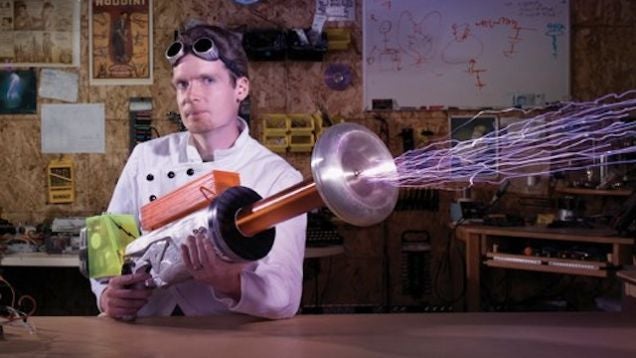
The Armys M4 assault rifle usually has a singular, deadly purpose: sending 5.56mm chunks of copper at things you dont like very much. But according to Defense One, the Army is working on an attachment for the M4 that would pretty much turn it into a ray gun.
The device, nicknamed Burkes Pulsar after its inventor, an electronics engineer with the Armys Armament Research, Development and Engineering Center, fits over the barrel of a standard-issue M4 (or probably any other 5.56mm weapon), kind of like a ray gun bayonet. When the rifle fires a blank round same gunpowder explosion, but without a bullet the explosive energy is converted into electrical energy, via the piezoelectric effect.
That electrical energy is then sent out via two ant-like antenna which spread from the barrel of the weapon. The range and power is still classified this is the military, after all but the hope is to be able to disable and destroy circuit boards from range. That would be used all over the battlefield stopping trucks without shooting them, disabling IEDs from afar, or just nuking someones cellphone.
Ray guns of some kind have existed before, but they normally require big old battery packs (or just an entire Humvee) to work. Burkes Pulsar could provide soldiers the ability to shoot down a hostile quadrotor without unpacking a single AAA.